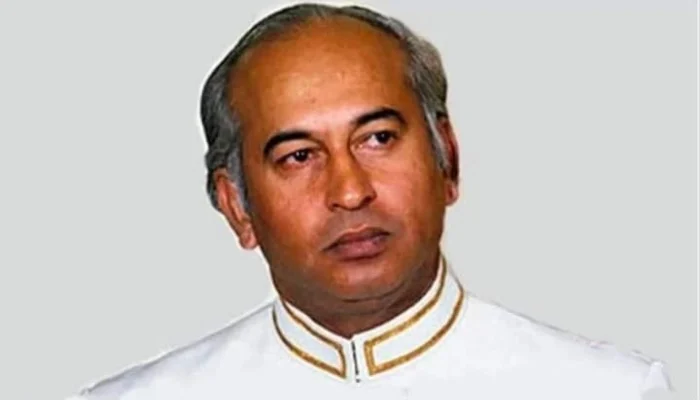Allah ki ek rassi, Tumhari ki ek rassi. Rahmatoon aur barkaton ka inam hai, Allah ki rassi ko mazbooti sey thamna. Ur tumari rassi… Aankhen ankhen zabaan deti ha. Qad lamba ho jata lekkkin qad.
This little poem, “Rope,” was discovered in the former prime minister Zulfikar Ali Bhutto’s personal library following his hanging on April 4, 1979, in a case that is recognized in the political and legal histories of the nation as “judicial murder.” After nearly 44 years, the Supreme Court upheld the historic error made by previous courts and agreed that the former premier was not given a “fair trial.”
However, the court continues to be “silent” regarding the judges that made such a serious error that finally led to the “gallows” for one of Pakistan’s most prominent politicians, who was also the driving force behind the country’s sole consensus Constitution and nuclear program. Is there anything the judiciary has learned from this trial and error? That is the million-dollar question.
The events that followed the former premier’s 1979 execution demonstrated that the higher court is still “under pressure,” with the majority of judges, with the exception of a small number, rendering decisions that were either driven by avarice or coercion. Those who objected or said “NO” were escorted out.
The judges failed to even take heed of Justice Munir’s “Nazriya-e-Zaroorat” (Doctrine of Necessity), which in the end resulted in the imposition of martial law in 1958 and the partition of Pakistan in 1971. The judiciary also did not learn from the Asma Jillani case, which in the 1970s declared martial law to be “illegal and unconstitutional,” and instead continued to give legitimacy to martial laws imposed by General Zia ul Haq in 1977 and General Pervez Musharraf in 1999. In addition, their decisions—which range from dismissing four elected administrations to handling a few other high-profile cases—remain contentious, starting with the judicial assassination of Zulfikar Ali Bhutto.







